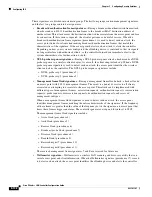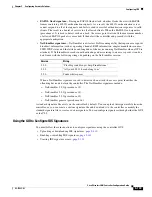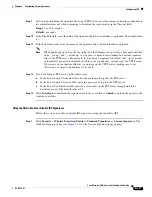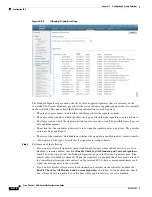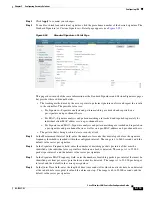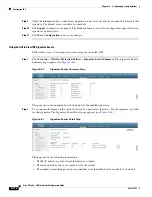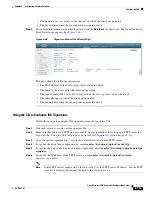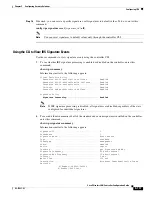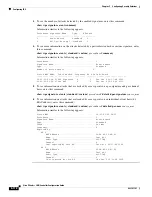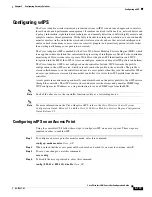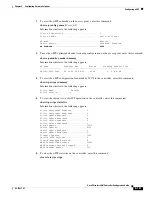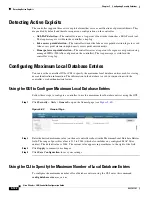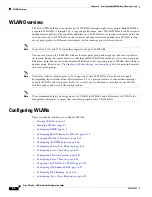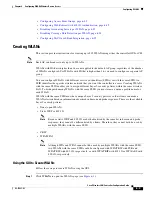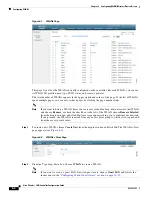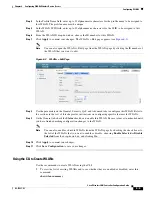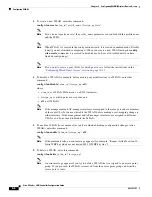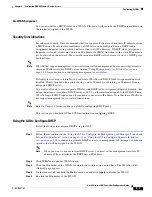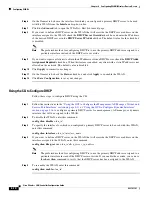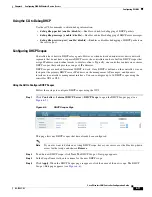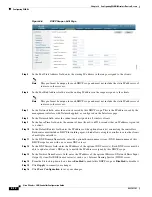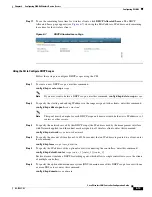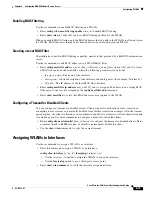
5-122
Cisco Wireless LAN Controller Configuration Guide
OL-17037-01
Chapter 5 Configuring Security Solutions
Detecting Active Exploits
Detecting Active Exploits
The controller supports three active exploit alarms that serve as notifications of potential threats. They
are enabled by default and therefore require no configuration on the controller.
•
ASLEAP detection
—The controller raises a trap event if an attacker launches a LEAP crack tool.
The trap message is visible in the controller’s trap log.
•
Fake access point detection
—The controller tweaks the fake access point detection logic to avoid
false access point alarms in high-density access point environments.
•
Honeypot access point detection
—The controller raises a trap event if a rogue access point is using
managed SSIDs (WLANs configured on the controller). The trap message is visible in the
controller’s trap log.
Configuring Maximum Local Database Entries
You can use the controller GUI or CLI to specify the maximum local database entries used for storing
user authentication information. The information in the database is used in conjunction with the
controller’s web authentication feature.
Using the GUI to Configure Maximum Local Database Entries
Follow these steps to configure a controller to use the maximum local database entries using the GUI.
Step 1
Click
Security
>
AAA
>
General
to open the General page (see
).
Figure 5-63
General Page
Step 2
Enter the desired maximum value (on the next controller reboot) in the Maximum Local Database Entries
field. The range of possible values is 512 to 2048 (which also includes any configured MAC filter
entries). The default value is 2048. The current value appears in parentheses to the right of the field.
Step 3
Click
Apply
to commit your changes.
Step 4
Click
Save Configuration
to save your settings.
Using the CLI to Specify the Maximum Number of Local Database Entries
To configure the maximum number of local database entries using the CLI, enter this command:
config database size
max_entries

